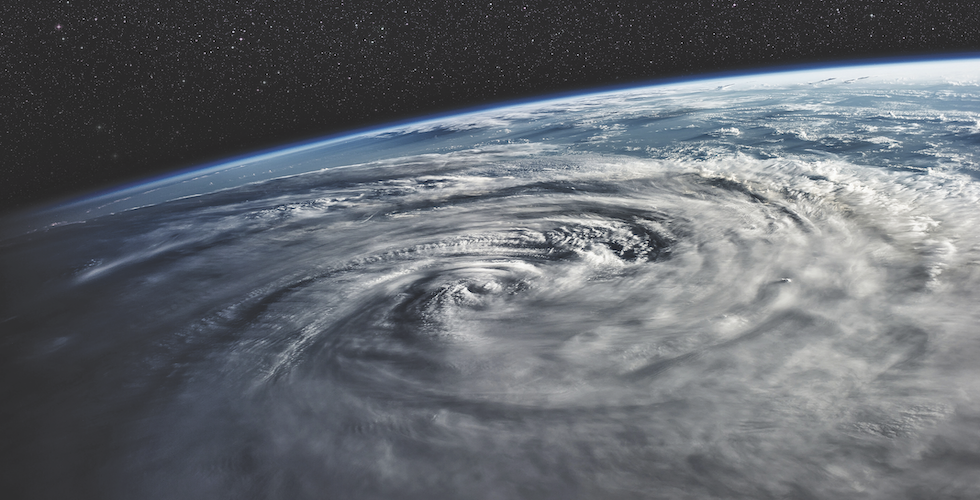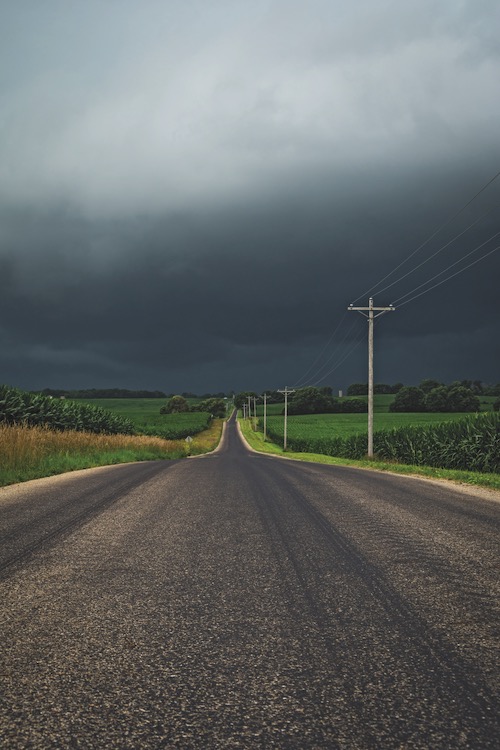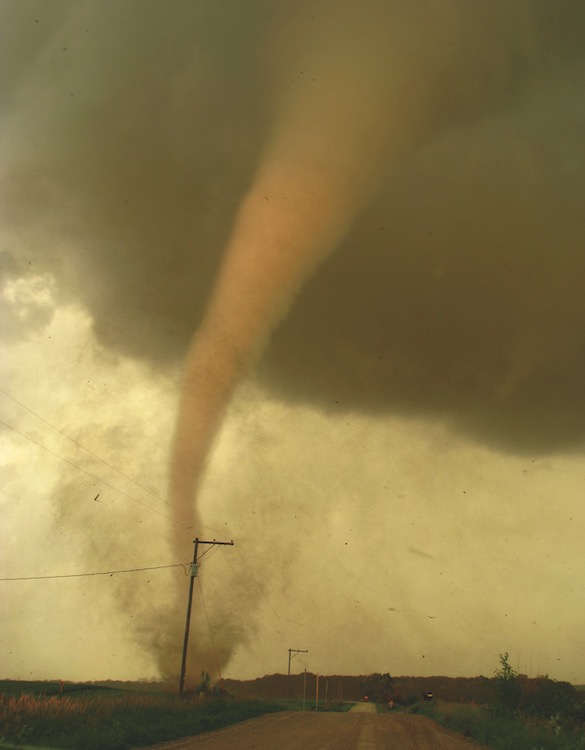
Identifying a Tornado and How to Be Safe
A tornado is often mistaken for clouds, but technically speaking, tornadoes aren’t a cloud type. Instead, tornadoes are a tight circulation of wind that emanates from the base of wall clouds. Often, what appears to be a cloud toward the lower portion of a tornado is actually dust and debris drawn into its path by its high winds.

Tornadoes occur in thunderstorms with very strong updrafts. Updrafts, despite their name, draw air from
all around a thunderstorm, rather than just below. Updrafts at the leading edge of a storm tend to be stronger and, therefore, can cause the entire storm to rotate. This rotating column of air will start to reach down on the rear side of the storm, in a feature called the rear flank downdraft, a process that creates a wall cloud. When that rotating column reaches the ground, a tornado is born.
It’s difficult to predict the direction a tornado will move, especially in the short term, but they will generally move in the same direction of the thunderstorm. They vary in intensity through their life cycle on the ground and are measured using the Enhanced Fujita Scale, ranging from EF0 (wind speed below 85 mph) to EF5 (winds of greater than 200 mph). Unfortunately, we can only estimate the strength of a tornado after the fact, using damage surveys.
When it comes to tornado warnings, the National Weather Service refers to tornadoes either as observed or radar indicated.

Generally speaking, both of these descriptions are equally reliable (or unreliable, in some cases). Often, the observed tornadoes are funnels that aren’t yet on the ground or are optical illusions of the night. Radar-indicated tornadoes are measured aloft, and they suggest an environment that is strongly favorable for the development of a tornado, but not the confirmed presence of a tornado.
While these descriptors are not perfect, they both warrant taking cover as soon as possible.
If the tornado is observed on the ground by a storm spotter or emergency personnel, it is labeled as a confirmed tornado. A tornado emergency can be issued if a confirmed tornado is moving towards a populated area. This is the most concerning and dangerous type of severe weather warning, and it should be acted upon urgently.
Being Safe
If a tornado is believed to be in the area, go to an interior, windowless room on the lowest level of the house, and put as many walls between yourself and the outdoors as you can. With strong winds and tornadoes, it is possible to get stuck out on the road or in an open area unable to reach shelter, and the best thing to do is keep a low profile. Tall vehicles, like trucks or vans, can be blown over, and remaining upright exposes you to more debris. Stay low and out of the wind if you are unable to find shelter.
Tornado Myths
Tornadoes get more media attention in the United States than perhaps any other weather phenomenon. The dangers tornadoes pose certainly warrant such coverage, but tornadoes are also the subject of a great deal of misinformation, and that includes many safety tips that were recommended once upon a time but are now out of date.
Here are a few of the most common tornado safety myths:
• Open all the windows to equalize the pressure.
• Go to a southwest-facing corner of the house.
• If you are on a highway, take shelter tucked under an overpass.
As you may have guessed, none of these tips are good advice. For more information on identifying clouds and storms, and how to stay safe, check out Ryan Henning’s Field Guide to the Weather.
If you enjoyed this post, sign up for our newsletter now!


